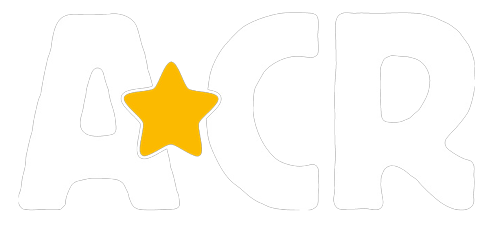Goavve-Geabbil, a free show, is in the Turbine Hall at Tate Modern until 6 April 2026
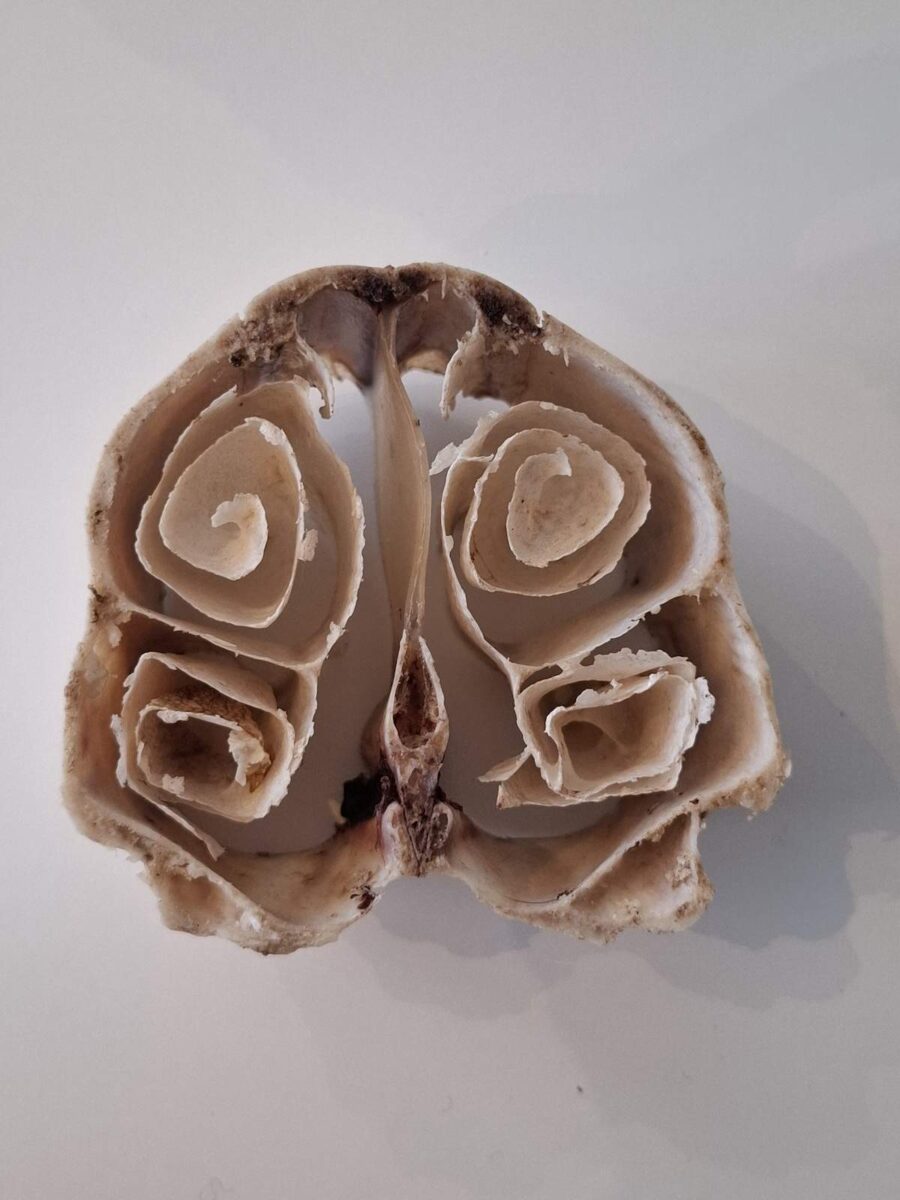
We went to the Tate to see another exhibition but ended up finding this free show in the giant Turbine Hall more moving and stimulating. Inside a recreated herding enclosure we sat on reindeer hides, put on headphones and listened to Sami people conversing with us about how their lives connected to the physical environment and their reindeer herds.
On a dreary Autumn day in London you felt the warmth of the reindeer fur rise through your body and were taken on a trip to the northern parts of Scandinavia and Russia. Sounds of water, animal noises and the strong musical voices of the Sami invaded your senses.
We learnt how the Sami cared for and venerated the reindeer, which provided them with so much of what they needed. The relationship recognised the distinct roles animals, trees and plants played in the environment. Humans here were not there to dominate, extract and destroy but to care and protect. Some reindeer hairs even come out of the exhibition with you on your trousers.
A reindeer’s nose
Sara uses the space of the Turbine hall well because you can look down on the Geabbil, the herding compound/exhibit, from the bridge in the middle of the hall. Then you can see it is a particular shape. The artist has configured the compound to recreate the structure of the reindeer’s nose. Extremely energy-efficient, the nose can heat air by 80°C in a single second, enabling reindeer to survive in cold conditions. Sámi science honours nature’s intelligence, spirit and power.
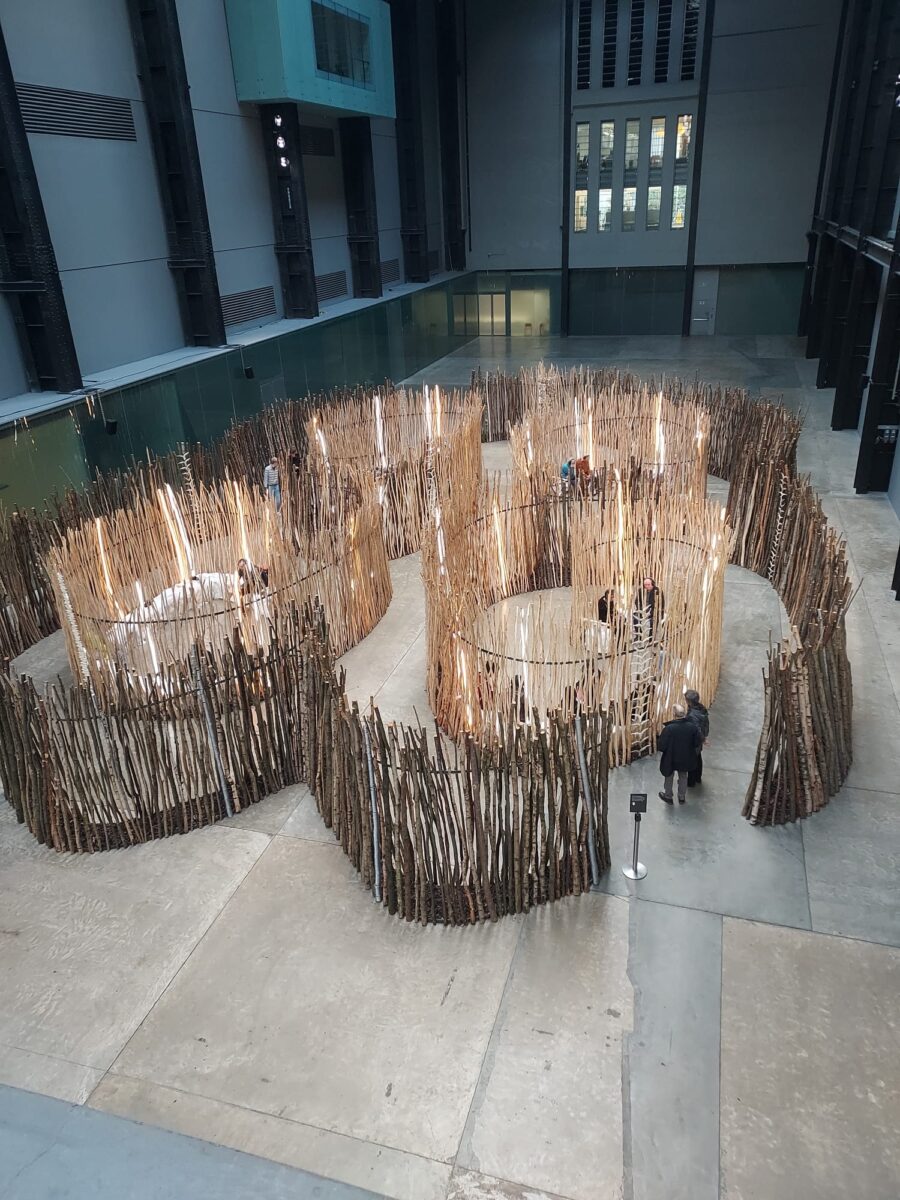
Reindeer nasal cavity
Máret Ánne Sara is a Sámi artist whose work advocates for ecological justice by communicating her community’s knowledge and practices. She has also written two youth novels that convey these ideas. The Sámi people are indigenous to the Sápmi region, which spans northern Norway, Sweden, Finland and the Kola Peninsula in Russia. Reindeer herding is a cornerstone of Sámi culture, shaping the relationship between people, lands and animals.
The exhibition’s second part, Goavve, rises over 90 feet to the ceiling. The column of reindeer hides tautly stretched by electrical power cables is a memorial to reindeer lives lost to climate change. Sudden temperature fluctuations are disorientating and can also prevent animals from accessing crucial food sources. The artist has imbued these hides with odour emitted by the reindeer when they experience a threat to their survival The cables also refer to the ongoing exploitation of Sápmi lands through mining activities, which not only destroys habitats and displaces communities, but risks diminishing age-old ancestral practices.
Artnet, a review by Jo Lawson-Tancred:
‘I work very consciously with materials in terms of the power they bear,’ said Sara. ‘The hides carry a very strong life energy and spirit within them.’ Tied up by cables for Goavve, they become ‘a symbol of life trapped within the mechanisms of capitalism and extractivism.’
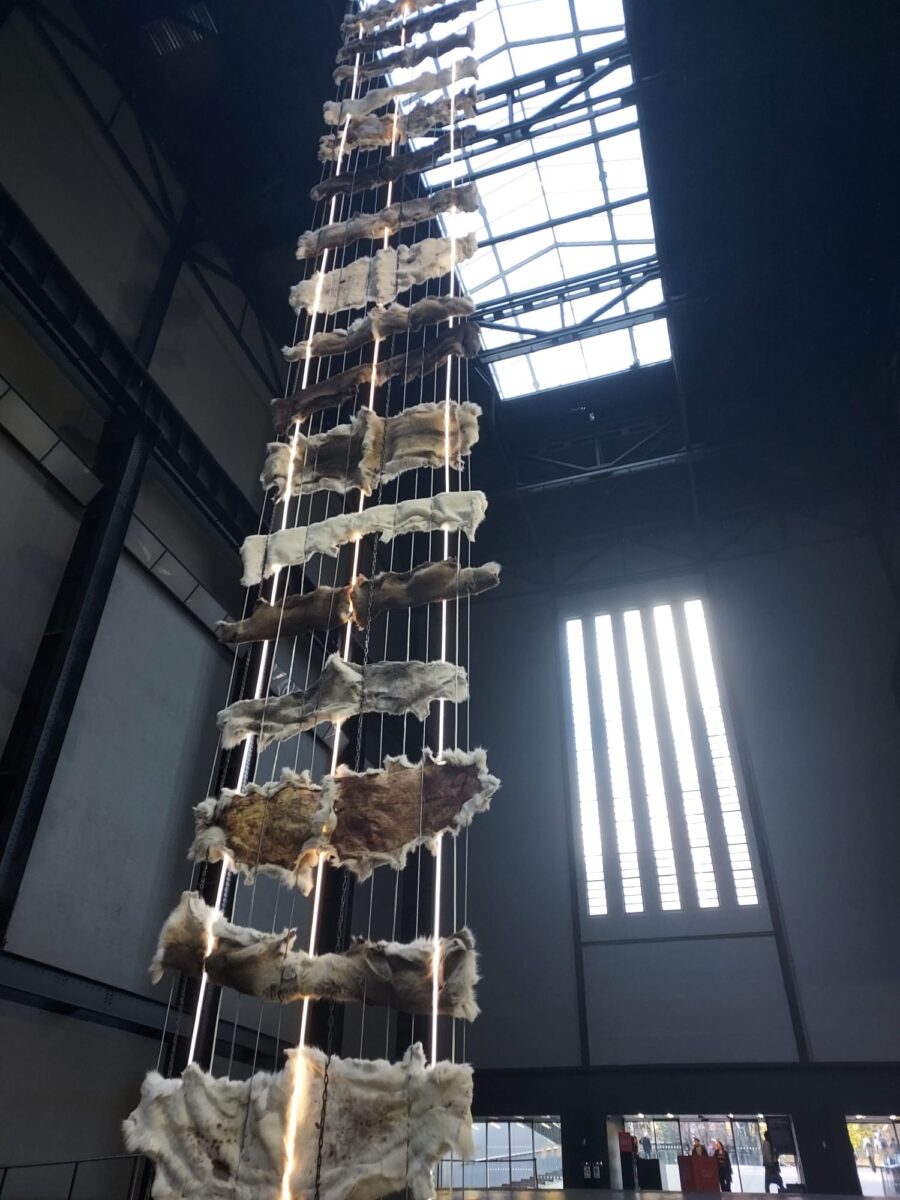
Eco socialists and productive forces
Socialists today need to enrich an historical materialist analysis with an ecological understanding that can be informed by some of the ideas of indigenous people’s like the Sami. The growth of the productive forces of production which traditionally 20th Century Marxists saw as a motor of human development is in fact a problematic concept.
Without idealising them, the Sami do make us reflect on the sort of sustainable, circular economy we need to fight for in any socialist alternative. We need a relationship with nature that respects its rhythms and the finite limits of our planet.
Living in a 24/7 world of artificial time dominated by our screens in a concrete environment we lose contact with the natural world. It is harder for us to smell the forest, to feel the earth on our hands or to interact with non-domestic animals. Perhaps the mental health crisis we are experiencing is linked to this failure to connect to natural rhythms.
Stillness is obliterated by a sensory assault driven by capitalist impulsions to consume more and more even if it all seems the same. It is hard to find somewhere to eat in a restaurant without loud music which prevents conversation. No wonder you see groups of people all looking at their phone rather than interacting with other people. More and more you order your food on a screen and less and less prepare it yourself.
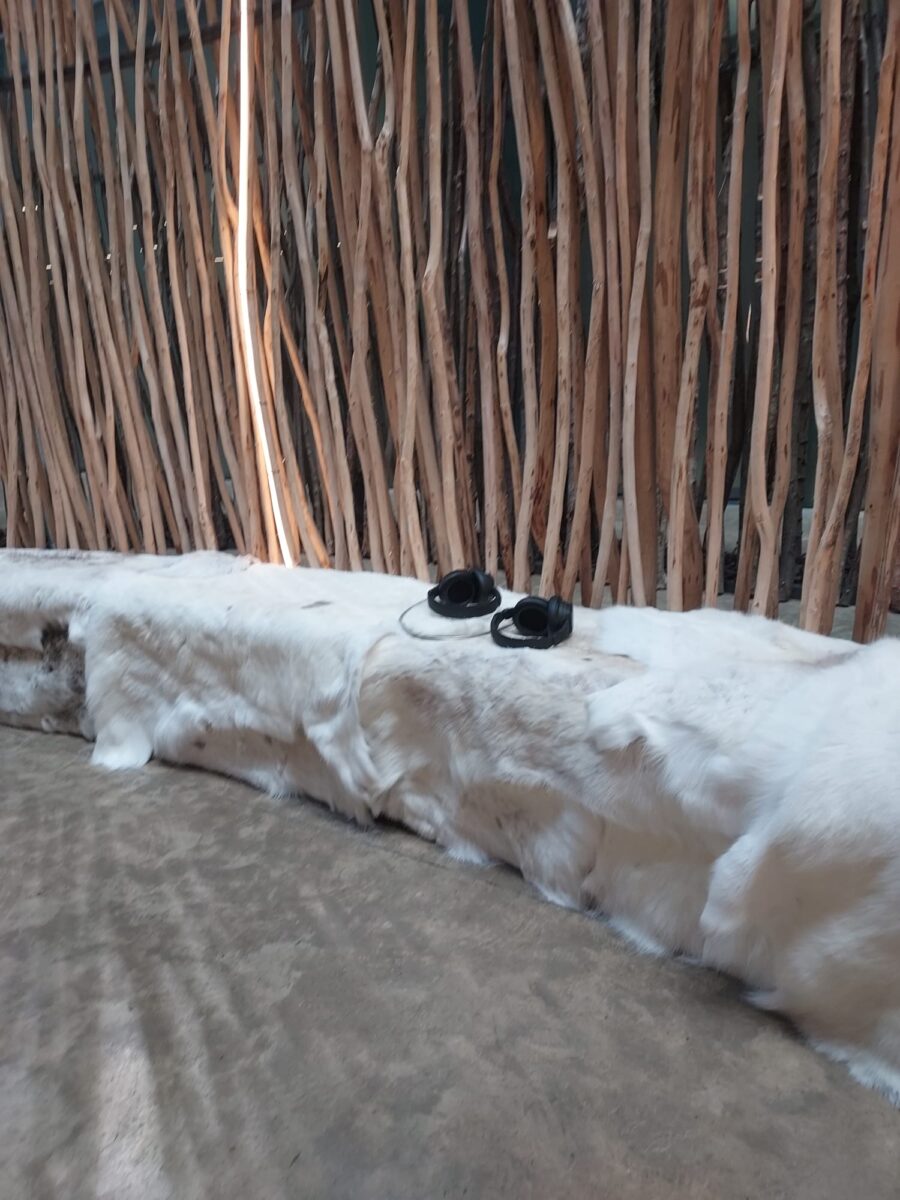
Sitting on the reindeer furs in a nasal shaped enclosure listening to Sami voice songs, reindeer snorting and running water just seemed a another sort of world.
Sami treat reindeer in a completely different way to how corporate agribusiness has created mega chicken, pig or beef facilities. Not only are animals mistreated and injected with all sorts of chemicals but their feed – like soya – means huge areas of wild nature and forests are destroyed.
Reindeer bones are not just tossed away by the Sami but they are used for useful ends and their skulls, jaw bones or antlers are put on trees as a mark of respect.
Indigenous peoples under attack
The Tate guide highlights how this precious culture is under threat from capital and its state:
The Nordic colonisation of Sápmi involves centuries of land dispossession, forced assimilation, and suppression of Sámi ways of life. Today, laws and policies continue to threaten Sámi culture, alongside the expansion of mining operations and energy industries. These developments are destroying reindeer grazing lands, disrupting migration routes and encroaching on ancestral calving grounds – which are central to Sámi reindeer herding, holding deep cultural and spiritual significance.

Climate change is also directly threatening the reindeer. Extreme temperature fluctuations are causing melting and then freezing which covers the land and prevents the animals accessing their food. The reindeer are suffering malnutrition and death.
Indigenous peoples are fighting back. Just this week they physically broke into the COP20 meeting rooms in Belem, Brazil, drawing the world’s attention to the need to defend them and their land against corporate profit.
History and human development should no longer be seen in a crude upward curve of development where the culture of pre-industrial peoples are dismissed as without worth. This exhibition helps us to understand a different way.
Art Book Review Books Capitalism China Climate Emergency Conservative Government Conservative Party COVID-19 EcoSocialism Elections Europe Fascism Film Film Review France Gaza Imperialism Israel Italy Keir Starmer Labour Party Long Read Marxism Marxist Theory Palestine pandemic Protest Russia Solidarity Statement Trade Unionism Ukraine United States of America War

